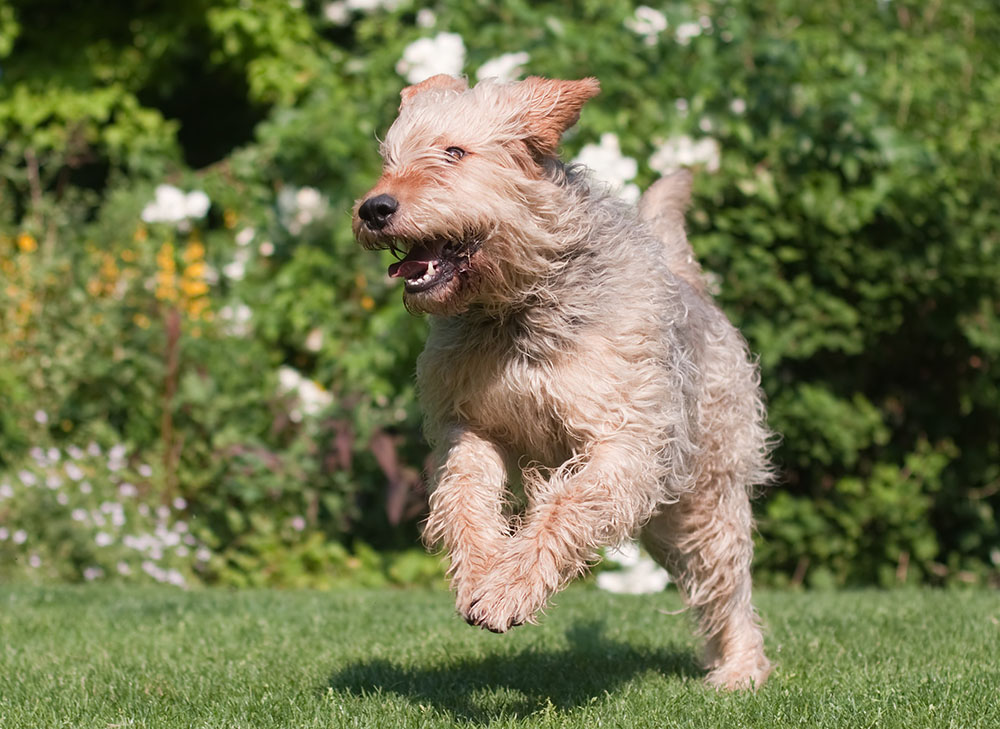Breed Profile – Otterhound
27/01/2017
This breed profile explores the water-loving Otterhound. Friendly, intelligent dogs, they are good fun to be around, but definitely come with their own particular challenges.
History of Breed: The Otterhound is a vulnerable native UK breed, with only 22 puppies born in 2014. As the name suggests, the breed were originally bred to hunt otters, which is now illegal. However, their rugged weather resistant coat, galloping run and loud baying call upon finding ‘prey’ remain characteristics of Otterhounds. Although classed as an ancient British breed, in the early 20th century some French Griffons were crossed into the breed.
Life Expectancy: Around ten years, with some dogs living as long as 12 or 14 years.
Size: Large. Breed standards dictate dogs should be 69cm at shoulder and approximately 52kg and bitches should be 61cm at shoulder and approximately 36kg.
Features: The Otterhound is a large, straight-limbed, extremely strong hound with a regal head. Their loose gait when walking progresses to a long-striding trot and a graceful gallop. They have large, round, webbed feet at the bottom of strong, sturdy legs. Long ears, covered in fringed fur are a characteristic feature of Otterhounds. Their intelligent eyes can come in a variety of colours, but yellow is never permissible. The Otterhound’s distinctive coat is long, dense and waterproof, with an oily, but never wiry, feel. The coat comes in all the usual hound colours. The only colours not permissible are liver and white or a white dog with distinct black and tan patches.
Energy Levels/Exercise Required: The Otterhound is an energetic dog that requires lots of exercise: more than two hours a day. A large house with a large garden or plenty of outside space to run about in is the ideal home situation. In addition, plenty of long walks are important. Otterhounds are water-lovers and thrive on or near the coast, fenland, lakes or rivers, where they can indulge their natural instincts. As a scent hound, the Otterhound displays huge perseverance when it comes to scents, following them for miles. Therefore extra vigilance, good training and control is essential when out on walks. It is also advisable to install extremely secure fencing to outdoor spaces at home.
Potential Health Problems: Despite the small numbers of breeding stock, Otterhounds suffer from relatively few hereditary diseases. Regular monitoring of the ears maintains good aural health and prevents ear lice. Two genetic conditions include hip and elbow dysplasia and epilepsy. Making sure that younger Otterhounds do not jump down from high up, over-exercise on hard surfaces or use stairs can delay the onset of hip and elbow dysplasia. This allows proper muscle development around bone sockets. Dog foods like Dr John Titanium and Gilpa Kennel contain supplements such as New Zealand green lipped mussel extract, a natural source of chondroitin and glucosamine, which aids healthy joints, and manganese for healthy ligaments. Gilpa Kennel caters specifically to large dogs and giant breeds: perfect for Otterhounds. Obesity exacerbates hip and elbow dysplasia, so it is important to feed to condition.
Temperament: Otterhounds are friendly and make good companions. They are fearless without showing aggression, intelligent but fun-loving. They are pack animals and will happily include their family and any other animals in their ‘pack’.
Family Dog/Child Friendly: Their amiable nature and energy levels make Otterhounds ideally suited to a busy family life that involves lots of outdoor activities. However, due to their size, they are probably best in a household with older children, rather than babies or toddlers. Otterhounds are rarely aggressive, but could be a little boisterous with little ones.
Likes: Long walks, exploring water, having fun.
Dislikes: Staying indoors for long periods, lack of exercise.
This breed profile uses information from The Kennel Club, Wikipedia and Dorling Kindersley’s ‘Complete Dog Breed Book’.



